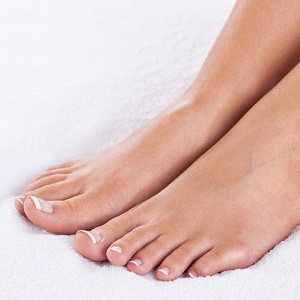I may have a Neuroma on my Foot -Should I Worry?
If you have a painful ‘something’ on your foot, it is most likely to be a morton’s neuroma, corn or wart. Many of us have at least one of them at some time in our lives. I decided to dedicate an article to the topic to assure you they are not life threatening. From a lifestyle point of view though, you should discuss a neuroma, wart or corn with your podiatrist or doctor.
Is a Neuroma the same as a Corn?
Corns and Shoes Don’t Go Together like a Horse and Carriage. Anatomically speaking, we should not wear shoes at all. However sometimes we need them to protect the soles of our feet. Fashionably speaking, shoes have become necessities. We decorate our feet with them in shapes and sizes that often bear no relation to the design of human feet. No wonder we have so many visitors to our website wanting the low down on their morton’s neuroma, corn or wart!
Corns are layers of dead skin that form as a defence to persistent rubbing. They often present on the upper side of toes where shoes scour persistently. While we can ask our doctor to slice them away, they will regenerate unless we change our footwear. The moral of the story is you cannot choose your feet to suit your shoes. You have to go the other way around.
A Wart is Quite Different from a Neuroma or a Corn
Warts, by comparison are infections we pick up from the environment around us. While some sensitive readers may find it off-putting, we can catch them in a public shower, or from working with meat. If we do nothing about them, warts can resolve themselves in years and even months. If you have a wart in an awkward place that troubles you, speak to your doctor.
Although nothing I wrote here constitutes professional medical advice, prevention is definitely better than cure. This means high standards of personal hygiene, especially the soles of our feet and the palms of our hands. If you wondered why some people at the gym wear plastic beach thongs in the shower, you have your answer.
Common Causes for Neuroma and Foot Neuroma
Neuromas are a benign growth on nerve tissue inside our body. Think about is as an unorganised collection of nerve cells at a site of previous trauma. So you probably don’t have to worry about cancer, although it is always a good idea to check with your doctor. However neuromas can be extremely painful – there may be nothing to see on the surface of your skin…very confusing.
Sometimes neuromas come upon us gradually as a natural part of aging. They appear in nerve fibres or on their outermost layers we call myelin sheaths. A traumatic neuroma arises through injury. An accident may have given a nerve a hard knock. A surgical procedure can have a similar result.
Researchers estimate we have 100,000 nerve cells or neurons in our feet. Surgeons often have to cut through them in the course of an operation. Under normal circumstances, they regenerate naturally. When they do not – and they are painful – we may require surgical intervention
Morton’s Neuroma: What It Is and Why You Get It
A painful morton’s neuroma can restrict our mobility to the point we do not feel like getting out of bed. It develops when a nerve between two toes becomes irritated and thickens to protect itself. The commonest location is between the third and fourth toes. Middle-aged women are most likely to get it when they wear pointy shoes that squeeze the digits together.
Men are not gender exempt. Their salvation is (usually) more sensible shoes. A pair of tight-fitting brogues can have a similar effect, as can charging around the squash or tennis court every day in tight gym shoes. A tingling is often the first sign of problems. This develops into a sharp burning pain at the heel or base of toes. Sufferers mention a sensation of having a small stone caught under the foot.
How do you Confirm that you have a Morton’s Neuroma
The first test is a very simple one.. Using one or two hands, on each side of your foot, and squeeze…A Morton’s neuroma classically causes great pain when you do this. 
No pain does not guarantee no neuroma, but it is a good starting point. The next stage is to get an ultrasound from an imaging clinic. A thorough ultrasound of the painful area will see if there is a change in the nerve fibres.
Ways to Repair Painful a Morton’s Neuroma
Speak to your doctor before the problem gets of hand. They may refer you to a podiatrist for advice regarding footwear and soft padding for your shoes. Losing weight will help. Steroid injections and painkillers seldom provide long-term solutions. Try using your foot less and see if this helps.
Some Podiatrists use other injectables into the area. I won’t elaborate. The evidence for these approaches is still in the early stages. Ask lots of questions.
I recommend surgery as the last resort only for a morton’s neuroma. In my experience, we are never quite the same afterwards. The surgeon may do the day procedure at their rooms. They will remove soft tissue around the nerve after exposing the problem, or take part away of the nerve itself to repair the morton’s neuroma.


Recent Comments